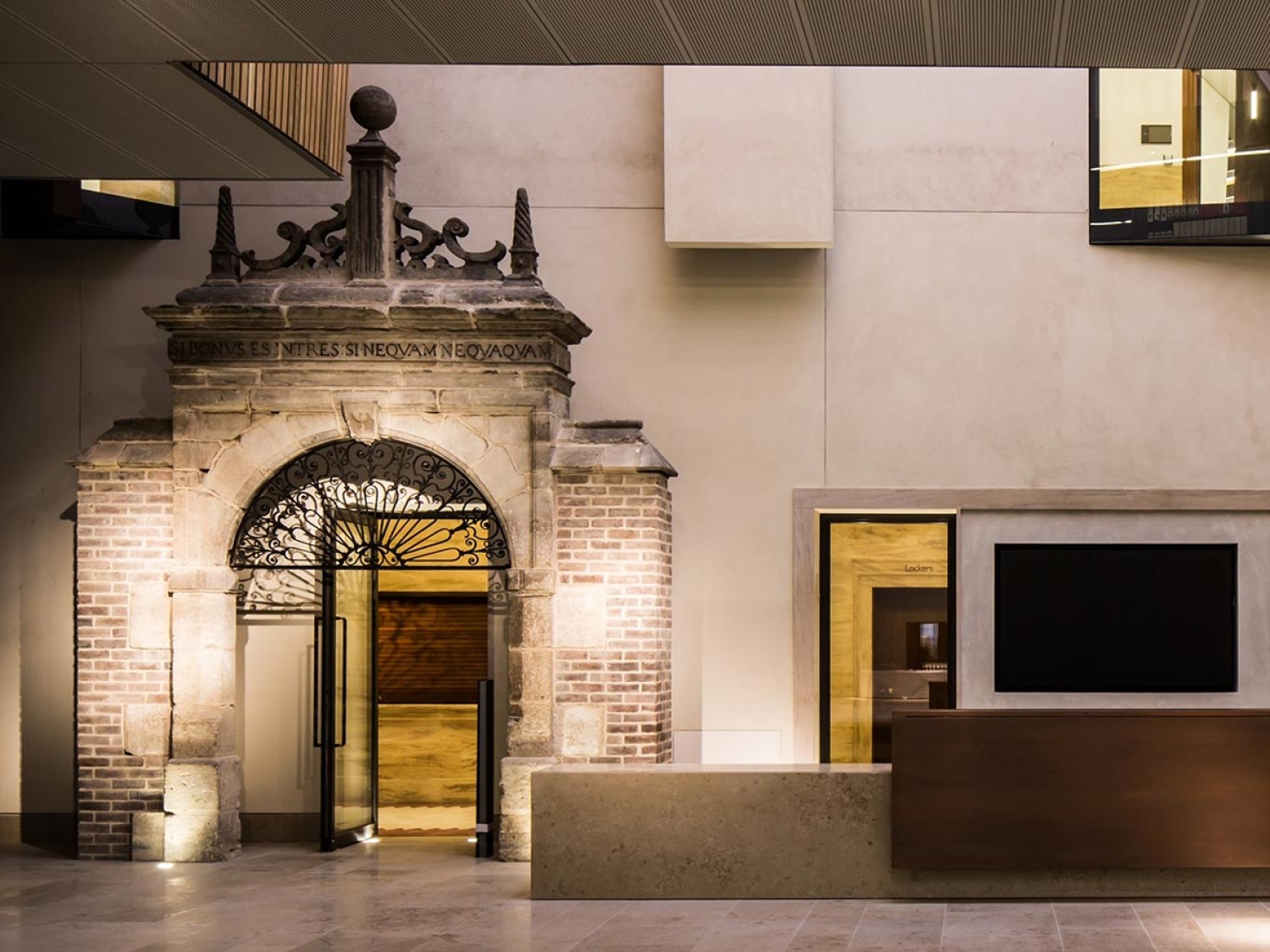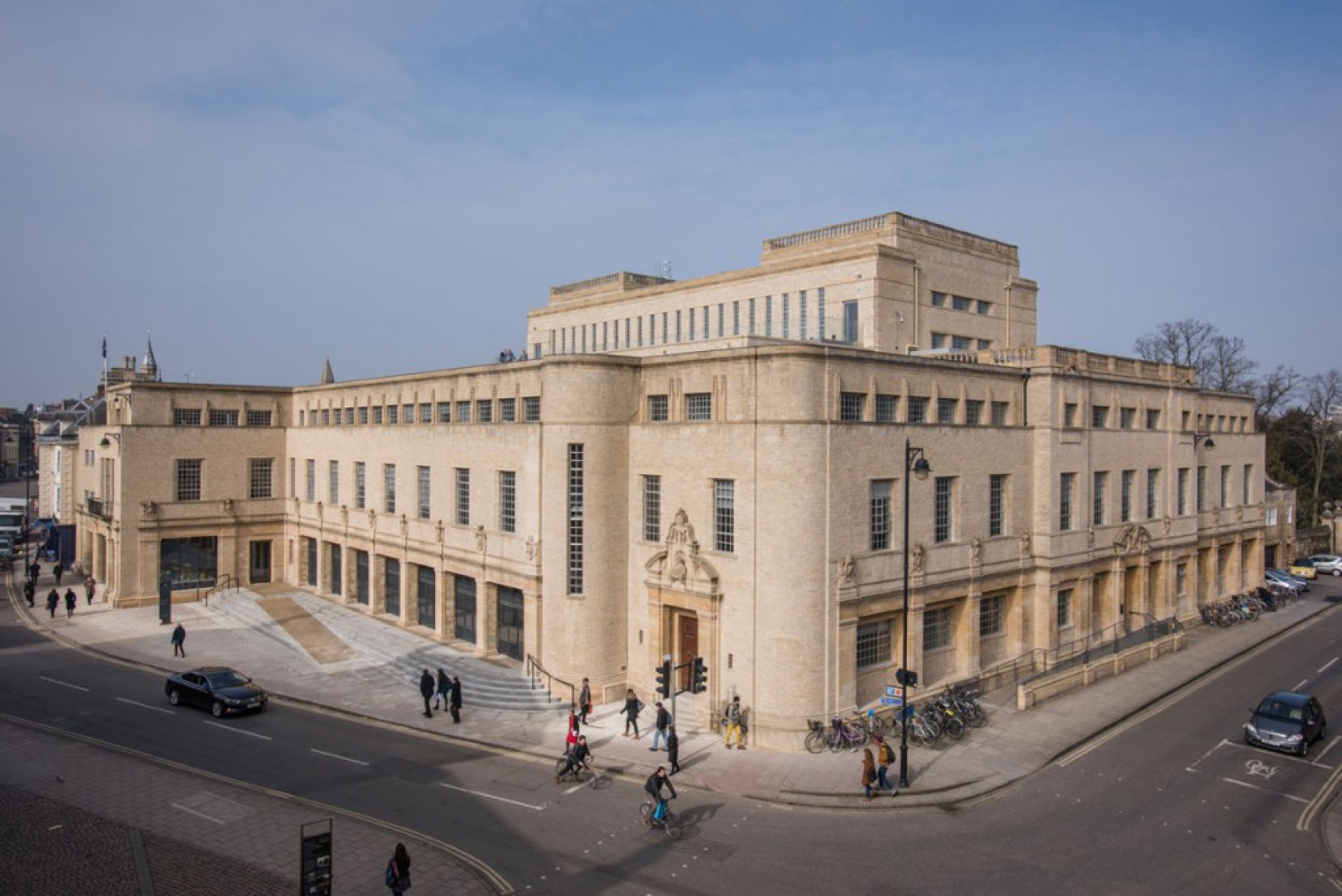Oxford University’s Weston Library, home to some of the nation’s most valuable literary treasures, reopened on 21st March 2015 following a renovation by leading architectural practice Wilkinson Eyre. Part of the University’s world famous Bodleian Library - formerly the New Bodleian - was originally designed by Sir Giles Gilbert Scott in the 1930s.
Situated opposite Nicholas Hawksmoor’s iconic Clarendon Building and Christopher Wren’s exquisite Grade I listed Sheldonian Theatre, its renovation is at the heart of an ambitious period of renewal of the Bodleian’s facilities aimed at safeguarding its vast and unique collection of books and manuscripts.
Description of project by Wilkinson Eyre
The much-anticipated project has created high-quality storage for the Libraries’ valuable special collections, which have been preserved for scholarship; developed the Libraries’ space for the support of advanced research; and has expanded public access to its great treasures via its new exhibition galleries and a lecture theatre.
By opening up the building to promote its special collections to the wider public, Wilkinson Eyre has also addressed the building’s identity and related it more closely to its immediate context by improving its perception and approach.
The new Blackwell Hall, supported by a £5m donation from Julian Blackwell, is a publicly accessible, top-lit 13.5 metre high space which forms the heart of the new library and features a café, information desk, a 16th Century tapestry map (the Sheldon Tapestry) and a 15th Century gateway on permanent loan from the V&A Museum.
The gateway originally led to the garden of the historic Dorner family’s estate at Ascott Park in Oxfordshire and was the only surviving structure following a fire in 1662. With the support of Oxfordshire Buildings Trust, the incorporation of this gateway sees this grand piece of architecture returned to its original home county in a new and unique setting, emphasising the theme of old and new that runs through the entire building.
Blackwell Hall opens up to two new exhibition spaces and a café, creating an enticing proposition and welcoming experience for the general public, being directly accessible through the new public entrance on Broad Street.
Exhibition galleries have been added, along with other new facilities including a Digital Media Centre, a Visiting Scholars Centre, a lecture theatre, and a suite of seminar rooms to enable teaching and master-classes based on the library’s special collections. The Bodleian’s Special Collections experts will now all be co-located in the building with their Conservation colleagues, as will the Centre for the Study of the Book.
Scott’s original design replicated the typology of an Oxford University college but with the traditional quadrangle space in the centre occupied by an 11-storey book stack based around a large complex of unprotected steel framework. The architects have revised the layout, removing the upper floors of this colossal central stack, and replacing them with a dedicated reading room and suite. The three- storey stacks underground have been partially rebuilt and upgraded to modern archival standards.
The highest storeys of Scott’s original building, hidden during the 1960s by an extension, have been re-instated and restored to include a new reading room boasting the best views of the city’s iconic spires. The slit windows arranged in rows, through which the spires are visible, are a signature Scott feature and a key expression of the building’s 1930s character.
Particular care has been taken to restore and match Scott’s high-quality craftsmanship and original materials palette. From stone to metal to plaster, as well as joinery and furniture, Wilkinson Eyre’s attention to proportion, materiality and light in the new spaces gives rise to a quiet, scholarly gravitas emanating from this previously unloved building.

































